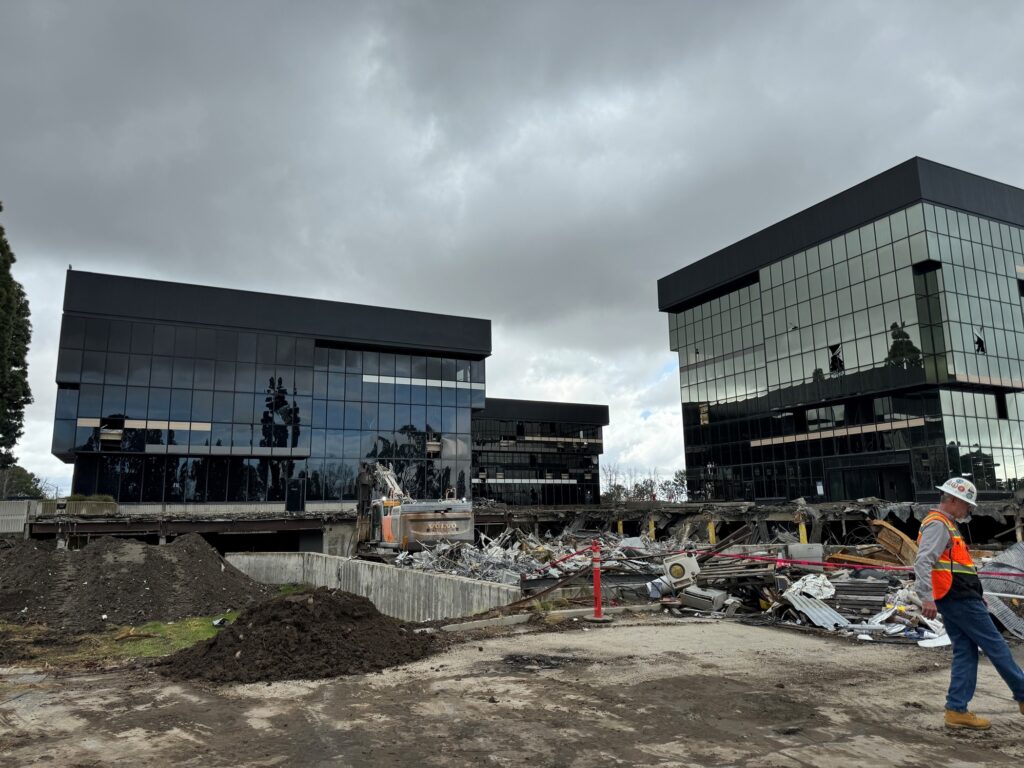
On a gloomy Wednesday afternoon in an affluent part of Southern California, an excavator’s claws sink into the face of a recently renovated, high-end office property, kicking off a demolition to make way for a warehouse.
The teardown in Santa Ana, one of the most populated cities in Orange County, is just one of many such conversion projects on the books across the country. That’s because some investors are giving up hope for their office properties blighted with high vacancy since the start of the COVID-19 pandemic.
The Santa Ana office owners — Los Angeles-based Kearny Real Estate and New York-based Dune Real Estate Partners — plan to redevelop the 200,000-foot building rated Class A at 3100 S. Harbor Blvd. into a 163,000-square-foot industrial facility. Construction is expected to begin in coming weeks and wrap up later this year.
As for the site, “you couldn’t draw it up any better for industrial,” said Kearny Assistant Vice President Dan Broder.
Industrial is a popular choice for investors looking to convert existing office buildings into more in-demand uses, with e-commerce driving the need for last-mile logistics space across the United States. Orange County is one of the country’s tightest industrial markets, with a 3.6% vacancy rate, well below the national average of 6%, according to CoStar data.
More than 15.2 million square feet of office space was converted into logistics use in 2023, according to Newmark and CoStar data. The total stock of U.S. industrial properties is growing at the fastest pace in more than three decades, according to CoStar.
Though demand has slowed for industrial space in recent years in light of higher interest rates, offices remain the hardest-hit property type in the wake of the pandemic. Low office attendance and slowed employment growth led to further occupancy losses and higher office vacancy in 2023, sending the national vacancy rate to a record high of 13.7%, according to CoStar.
“Though near-term recession fears have eased, and more organizations look set to enforce requirements for increased onsite work, the outlook for the year ahead remains dim,” notes a CoStar analytics report.

